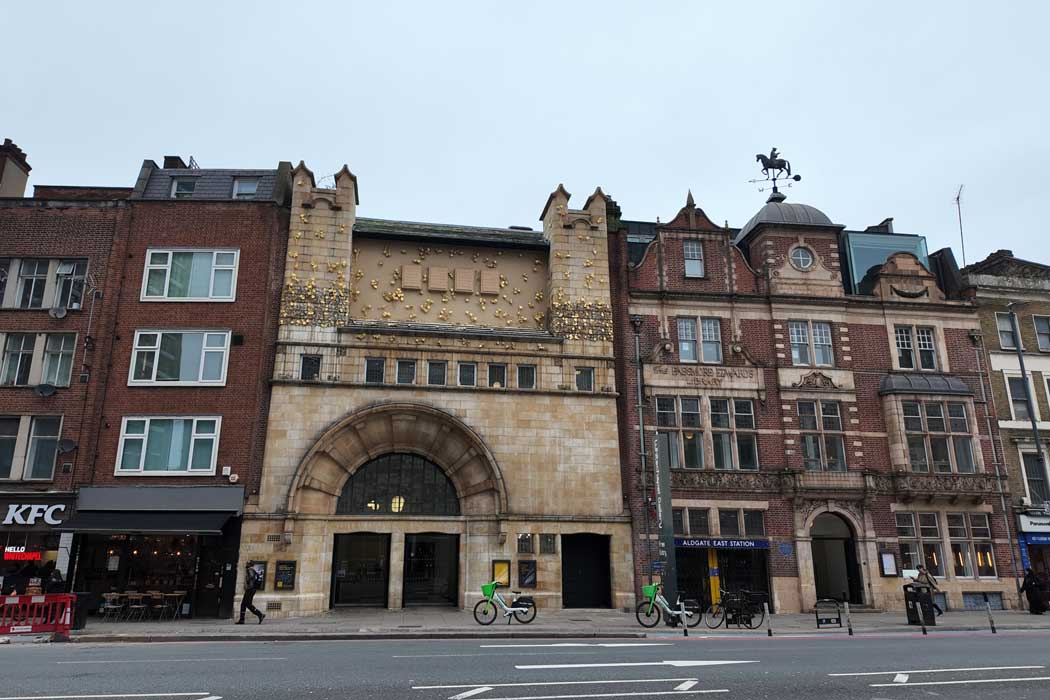Established in 1901, Whitechapel Gallery was one of the first art galleries in London dedicated to hosting temporary exhibitions.
Whitechapel Gallery is noted for hosting a 1938 exhibition exhibiting Pablo Picasso’s Guernica and it is also credited with introducing Pop Art to the general public. With a rich history of presenting groundbreaking exhibitions and supporting emerging artists, the gallery offers visitors an experience at the forefront of contemporary art culture.
In 2009, Whitechapel Gallery doubled in size after acquiring the neighbouring Passmore Edwards library building and it now has nine exhibition spaces plus a bookshop and restaurant.

What to see at Whitechapel Gallery
Visitors can see a range of contemporary art exhibitions that reflect the diversity and innovation of the art world, with exhibitions drawing from both international artists and artists within the local community.
Exhibitions at Whitechapel Gallery cover a range of artistic media, including painting, sculpture, photography, video art and installation. These exhibitions often explore relevant social, political and cultural themes, providing visitors with thought-provoking insights into contemporary issues.
Temporary exhibitions at Whitechapel Gallery
Whitechapel Gallery does not have a permanent collection and focuses solely on hosting a programme of temporary exhibitions. Current and planned exhibitions include:
Joy Gregory: Catching Flies with Honey
Joy Gregory is a photographer whose work explores identity, history, race, gender and societal ideas of beauty. Spanning four decades, this exhibition (until 1 March 2026) presents over 250 works including photography, film, installation and textiles. It highlights Gregory’s use of traditional and digital methods, Victorian photographic techniques and performance. The display examines themes of self-definition, cultural memory and the social and political contexts shaping her practice.
Candice Lin: g/hosti
In this new commission by Candice Lin (until 1 March 2026), visitors move through a circular labyrinth of painted cardboard panels depicting animals, mythical figures and unsettling imagery. The installation includes hand-drawn stop-motion films on small screens and sculptural works addressing histories of colonialism, violence and social control. Text inscribed around the room explores ghosts, strangers and hostilities. The exhibition reflects on cycles of loss, memory and political experience.
Visiting Whitechapel Gallery
Whitechapel Gallery is near where the East End meets The City of London. It is on Whitechapel High Street, close to Brick Lane and the vibrant Whitechapel area but also just a few minutes walk to The City of London.
It is next door to Aldgate East tube station (on the District and Hammersmith & City lines) and Whitechapel tube station (Elizabeth, District and Hammersmith & City lines plus the Overground) is a 12-minute walk away. It is also served by several bus routes including buses 25, 205 and 254.
The gallery is open Tuesday to Sunday (closed on Mondays) and entrance is free of charge, although some exhibitions may have an additional charge.
Visitor facilities include a bookshop and restaurant and the gallery’s location means that there are plenty of other places to eat and drink nearby, particularly on Brick Lane, which is noted for its Bangladeshi restaurants.
Because the gallery has a focus on temporary exhibitions, the time to allow for your visit will vary depending on which exhibitions are currently running. A visit could last anywhere from half an hour to several hours, even up to half a day if there is an installation where several feature-length films are being shown.
We may earn a small commission if you book after clicking the links below.


There are no comments yet.